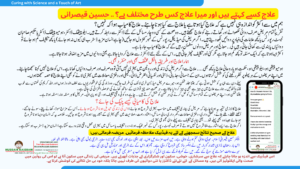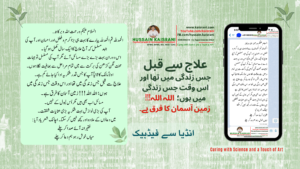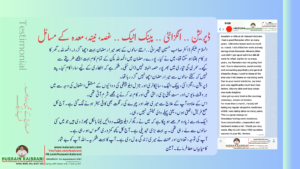Ammonium Carbonicum
Carbonas [sub] ammonii
Sal volatile anglicanum
English: Sesqui carbonate of ammonia; Smelling salts
French: Ammoniaque carbonate; Sous-carbonate d’ammoniaque; alkali volatil concret; Sel volatil d’ Angleterre
German: Fluchtiges Lügensaltz
The essential features
This is a complex remedy, one which is very little understood, and therefore seldom used. Most probably, other remedies, such as one of the Kali’s, especially Kali carbonicum, or Antimonium tartaricum or Carbo vegetabilis, are prescribed instead. Its symptomatology seems to be quite complex, covering a number of different pathological states, and its uniqueness is consequently difficult to grasp. Kent describes Ammonium carbonicum as “a deep-acting, constitutional remedy, an antipsoric.”
I must here take issue with the expression “constitutional remedy” if the implication is that it is so because it is a deep-acting remedy. I have come to realize that all remedies can act deeply when they are truly indicated, when they are the “similimum.” Consequently, any remedy may act as a constitutional remedy when appropriately prescribed. Any remedy, when only superficially prescribed, will have but partial action, and, conversely, any remedy, when properly prescribed according to deeper indications, can affect the entire constitution. The strange phenomenon seen in everyday homeopathic practice is that many times superficial remedies have to be prescribed before the real constitutional remedy can take effect. I believe that Kent actually conceived of the constitutional remedy as having the broader definition specified above, and that his followers have sometimes misunderstood him to suggest a narrower interpretation.
Ammonium carbonicum is indicated in those cases with a flabby, obese appearance, very much like the Cushingoid appearance induced by exogenous cortisone ingestion. The face is pale, bloated and puffy, and there is an impressive softness of the tissues. This flabbiness and softness seem to prevail in Ammonium carbonicum patients.
They are fat people with weak hearts and even weaker respiratory systems. As a result, this remedy corresponds to cases of heart disease, angina pectoris, enlargement of the heart, heart failure, etc.; in general the condition of the heart seems precarious. The patient feels prostrated, and every movement produces a violent, almost audible palpitation that drives him to bed with great anxiety, feeling as if he is dying. He has to rest all the time in order to feel comfortable; the least exertion induces this tumultuous palpitation, a feeling of prostration and a sense of suffocation. However, all these symptoms may be present with or without obvious heart pathology. In some cases an early subclinical enfeeblement of the heart produces such symptoms, but the same remedy, given for the same symptoms, will prove useful for gross pathology, such as the final stages of pneumonia with heart failure.
Acute pulmonary edema is a state for which this remedy should be studied. Kent writes: “You see ‘heart failure’ spoken of in old school literature (allopathy). They say the patient got along very nicely, but finally died from heart failure. In a great many instances, if Ammonium carboncium were given in time, it would save life.” Usually, with this kind of symptomatology signs of cyanosis will be present.
Unfortunately, in our western system of medicine people are permitted to die only under allopathic treatment, so homeopathic physicians do not have a chance to treat such severe pathology with homeopathic remedies, especially considering the absence of homeopathic hospitals that can accommodate such cases. Consequently, we cannot develop a full knowledge of our remedies; it will take a very long time before their real pathogenesis is reliably comprehended.
Dyspnea, the result of a weak heart, is produced by Ammonium carbonicum; consequently, cardiac asthma is covered by this remedy, but Ammonium carbonicum has also been useful in bronchial asthma and emphysema.
Think not of Carbo vegetabilis or Antimonium tartaricum, but of Ammonium carbonicum when you have a case with the following picture: the patient is in great distress with suffocative breathing and loud, noisy respiration. He displays cyanosis of the lips, across the nose and even of the fingertips; his nose is cold, yet his body and feet feel warm. His pulse is extremely rapid, and his voice is very weak and hoarse. He wears an anxious expression and has a feeling as if something bad is about to happen. It is for cases such as this that Ammonium carbonicum will be of great service in hospital practice.
Ammonium carbonicum asthmatic patients have to make a tremendous effort to climb just a few steps; they are terribly aggravated in a warm room and can breathe better if they are in clean, open air. These are the people who suffer the most from pollution, from the motor vehicle exhaust fumes so prevalent in large cities. In these respiratory disease cases there will be a long history of susceptibility to repeated attacks of common colds, repeated coryzas with very acrid catarrh from the nose, which is blocked completely during the night in bed. The patient wakes up frequently from inability to breathe. The colds travel down to the throat and finally settle in the bronchi, eventuating in a dry, tickling cough. This cough is almost always associated with hoarseness and a great deal of chest oppression, the result of an accumulation of tenacious mucus in the chest. Year after year these colds become more frequent and more severe and progressively weaken the chest until, one day, the colds settle in the bronchi and refuse to yield; then the dyspnea starts. There is an accumulation of mucus in the bronchi which is very difficult to expectorate. Finally, the emphysema becomes so severe and the movement of air so restricted that the cough and rales disappear; only severe dyspnea is then clinically apparent.
Most probably, the Ammonium carbonicum case will be recognized as such after one has for years prescribed other remedies; such as, Allium cepa, Arsenicum album, Dulcamara, Arum triphyllum, and, later, Carbo vegetabilis, Antimonium tartaricum and Kali carbonicum, with little or only partial success.
A great characteristic of this remedy is that all discharges are acrid. Like crude ammonia itself, which always emits a pungent odor, Ammonium carbonicum exudes acidity both mentally and physically. The saliva becomes acrid and excoriates the lips, which crack at the corners and in the middle. The eyelids fester and become dry from the excoriating fluids discharged from the eyes. The stool is acrid and excoriates the anus. The menstrual discharge and the leucorrhea are acrid and excoriate the female genitalia; the discharge from ulcers is acrid and excoriates the surrounding area.
The gums recede; they bleed and become spongy; the teeth loosen and fall out. It is a remedy that should be thought of for tuberculosis due to its tendency to produce hemorrhages. The nose bleeds easily when washing the face and hands and when eating. The tonsils and throat ulcerate easily.
It is appropriate to mention here another characteristic of this remedy — the effect it has upon the skin, its tendency to produce dark reddish eruptions; the body is red, as if covered with scarlatina. Malignant scarlatina with deep sleep, stertorous breathing, and starting from sleep. Erysipelas. Snake bites.
Kent writes, “It effects rapid blood changes, it disturbs the whole economy and it establishes a scorbutic constitution… This remedy has bleeding of black blood, often fluid blood, that will not coagulate… The blood is dark showing that a great disturbance is taking place in the circulation… If you examine the pathogenesis of people who have been bitten by snakes and then examine the pathogenesis of this remedy, you will see a great similarity between them. It is well known that this remedy has had repeated use in snake bites… Give it not as an antidote per se, but when indicated in blood poisoning and animal bites with zymosis, with a tendency to black, liquid bleeding, as in Elaps.”
Another important aspect of this remedy is the prostration associated with heart or respiratory problems. There is tremendous exhaustion; the patient tries to get up from bed but falls back into it, the heart pumping very strongly. There is indescribable fatigue in cases of heart problems or lung emphysema. The patients are dyspneic and unable to expel the mucus which seems to be in the lungs; breathing is nearly impossible and the exhaustion tremendous. Exhaustion is also accentuated at every menstrual period – an exhaustion accompanied by vomiting and diarrhea, coldness of the body, blueness of the skin, and dyspnea.
The Ammonium carbonicum patient is one who cannot tolerate cold weather, especially if it is also wet and stormy. Anything wet upon their body makes them feel uncomfortable. As a result of this aggravation they develop an aversion to taking a normal bath and eventually develop unclean habits. They seem unconcerned about their physical uncleanliness, but their sullied condition is rather extenuated by the degree of aggravation they suffer from contact with water. One has to imagine what life is like for these persons with their respiratory problems: their heart feels weak, about to give in; they are acutely aware of their great susceptibility to catching colds and of the aggravation of their chest problems that will result; and, given their sensitivity and weakness, they fear that any exposure to cold weather or wetness will finish them once and for all. In this respect they resemble Rhus toxicodendron ; other points of resemblance are that both have bone pains which are aggravated in such weather, chronic sprains, and contraction of the hamstring tendons.
I would not prescribe this remedy for purely mental disorders in that a clearcut picture of the mental state is not yet available. However, some basic psychological characteristics have been established. To understand the mental-emotional states of this remedy the patient’s physical condition must be taken into account. The acrid nature of Ammonium carbonicum excretions and discharges hint at the psychology of this remedy. First, we must consider this patient’s psyche in its physical context: the individual suffers enormously with his many colds, his difficult respiration and coughing, etc.; also, his heart feels weak, and, in addition, his tendons feel stiff and add to his limitations. Under such circumstances he develops an acid character when in contact with others. He becomes obstinate and very reluctant to obey orders. Either this acidity or indifference prevails.
He becomes irritable, unfriendly and, many times, abusive. He has a bad humor, a sour disposition, is sulky and silent, and refuses to answer questions. He feels worse when hearing others talking. He is very sensitive to any kind of criticism, not only of himself, but also of others. He is a person who does not “share” easily, especially his emotions. He is indisposed to talk, taciturn. His manner and reticence seem to expressly convey the message that he just does not want to be bothered.
These patients are prone to irascibility and excessive anger, especially when suffering from a headache. And they experience severe headaches which are concentrated in the forehead and, more specifically, at the root of the nose. They have headaches that feel as if the head will explode. They are also irritable during bad weather, which for them is cold, wet weather, and especially in the evening hours.
In general they are timid people who remain in the background. They avoid crowds. In conversation they become excited only when talking to no more than one person and only when discussing a subject they enjoy.
This remedy seems to be impressionable; at the end of the day the subconscious mind of these patients remains occupied with the day’s unfinished business, things that they should have said and did not. In the night, during sleep, they talk quite clearly, revealing their secrets, thoughts that they would never express while awake. On many occasions they wake startled, in a fright.
These individuals are liable to believe that they are unlucky and that a misfortune will befall them at any time. This dread of a coming misfortune manifests mostly in the morning hours, while in the evening it is supplanted by a peculiar anxiety and fear that makes them feel like crying.
They become sad, morose and miserable, especially in cloudy and wet weather. Ill humor arises in the morning. They have the tendency to weep, especially in the morning on rising, and they do weep a lot. This tearful mood is ameliorated as the evening approaches.
Sometimes they feel like going for a walk, but walking aggravates them, causing a return of sad memories, things that have displeased them in the past; as a result they become depressed and discouraged.
Eventually their intellectual faculties become impaired; they have difficulty retaining their thoughts and concentration becomes difficult. They lose their memory, become absentminded. They make mistakes in calculating, in speaking, in writing; they use wrong words.
If you have been treating such a case for a long time with incorrect remedies, you will observe this process of degeneration and feel helpless to stop it. The remedies you give act only superficially, palliating but not penetrating deeply enough to bring about the desired change. Suddenly you realize your mistake and administer this remedy, and then you observe the wonderful changes that can take place as a result. Patients who were almost invalids lay claim to a new lease on life.
These people do not have excessive sexual appetites, but they are very sensitive to sensual impressions. Their fantasies can be stimulated easily. Some Ammonium carbonicum women may display an hysterical reaction to sexual stimulation, the result of an oversensitiveness of the clitoris. Interestingly however, when their physical ailments become really annoying, they completely lose their interest in sexual intercourse. Women may actually develop an aversion to sex, while men lose their desire though still capable of achieving an erection. Another aspect of this remedy is seen in hysterical women with a tendency to faint.
Most of the older Ammonium carbonicum men I have seen have not been married. Perhaps this is a coincidence, but I think it is worth mentioning. Their unclean habits, their disinclination to share themselves emotionally, their inclination to live alone, without responsibilities, because of their bad health, and their misery as a consequence of weak respiration and a weak heart may account for their disinterest in marriage.
Some Ammonium carbonicum children appear somewhat backward and behave immaturely; they have difficulty learning at school and are lazy. Interestingly, they can at the same time be critical of others and very demanding of their parents.
Generalities
Ammonium carbonicum is a remedy that is indicated in constitutions which have difficulty in oxygenating the blood; this is the first remedy indicated for asphyxia from charcoal fumes. It is one of the best remedies for emphysema with cyanosis. The circulation becomes sluggish.
This remedy will be indicated when there is a defective reaction to severe febrile diseases, such as typhoid fever, diphtheria, malignant scarlet fever, erysipelas, etc., especially when several incorrect remedies have been prescribed, confusing the case and leaving the patient looking exhausted and almost pulseless with a weak heart.
The remedy should be remembered in cases of cerebrospinal meningitis when the patient is first striken by the disease, falling into a semi-comatose state. The body is cold, the pulse very weak, the surface of the body cyanotic. This remedy will help to establish a reaction.
Another general characteristic of this remedy is a tendency to hemorrhages of dark blood, sometimes black, that will not coagulate.
Ammonium carbonicum cases are very much aggravated by cold and wet weather and by stormy or cloudy conditions, with the exception of the dyspnea, which is very much aggravated in a warm room. In a warm room they become pale and so much worse that they have to sit down and avoid any movement at all. Walking outside in cold air makes them feel terrible; they will avoid it at any cost.
Water seems to aggravate these patients considerably. They are averse to bodily contact with anything wet; consequently they do not like to wash and sometimes avoid bathing so assiduously that they become a significant problem for others living with them.
Women are aggravated during the menses, and many have to stay in bed during this period. Symptoms resembling cholera, with constant diarrhea and vomiting, may arise during the menses. Hysterical women with a tendency to faint.
There is also aggravation from motion, from chewing or pressing the teeth together, and from bending down. The time of greatest aggravation is between 3 and 4 a.m. , leading to ready confusion with Kali carbonicum in cases involving lung pathology. There is amelioration by lying down, especially on the abdomen, and by becoming warm in bed. Better lying on the painful side.
Vertigo
Vertigo on reading in a sitting position, in the morning or the evening.
Head
Pulsating, beating, throbbing headaches, mostly in the forehead, after dinner; after eating; while riding in cold air. Congestive headaches during wet weather, aggravated by walking in the open air. The most characteristic headache is a pressive one situated at the root of the nose which gives the impression as if the forehead would burst. A warm room ameliorates a pulsating sensation in the head. The headaches are worse when stepping and in the morning on waking, better with pressure and in a warm room. Headache with nausea.
Sensation as if the brain would ooze out through the forehead and eyes. The brain seems loose. When biting the teeth together or when chewing, there are shocks which pass through the head, eyes, ears and nose.
Eye
Burning of the eyes with aversion to light. Sensation as if there were sand in the eyes. Right eye feels as if bathed in hot water. Eye strain. After strain, muscular asthenopia. Pain in the eyes, better from afternoon sleep. Lids become swollen, dry and cracked from the excoriating fluid discharged from the eyes. Eyes bloodshot with lachrymation.
Vision
Sparks before the eyes at night; on waking. Double vision. Large black spots float before the eyes after sewing. Cataract of right eye.
Ear/hearing
Discharge of acrid fluid from the ears. Shocks through ears, eyes and nose when biting teeth together or chewing. Painful sensibility, increased in deaf ear. Hardness of hearing.
Nose
Coryza in hysterical females and old people with discharge of sharp, acrid, burning water. Stoppage at night; cannot breathe at all through the nose; the nostrils are completely blocked.
Epistaxis, mostly from the left nostril, when washing the hands and face, and also after eating. Tip of nose congested. When stooping, the blood rushes to the tip of nose, causing it to become red.
Face
The face becomes heated when talking about an exciting subject, also when eating. Tetters (skin eruption) around the mouth. Hard swelling of the cheek. Boils and pustules during the menses. The corners of the mouth are sore, cracked and burn; at the same time the middle of the lips are cracked because of an acrid saliva. Boils and pustules during the menses. Cyanosis of the lips, across the nose, and even of the fingertips in cases of acute pulmonary edema or pneumonia.
Mouth
Redness and inflammation of the inner mouth and pharynx. Sensation as if the mouth were swollen. Swelling internally of the cheeks. Food tastes metallic. Taste sour; metallic. Great dryness of the mouth and throat. Vesicles on the tongue. Cracking of the jaw on chewing.
Teeth
Drawing pain in the teeth during menses. Tearing pain when biting the teeth together. Toothache. Pressing teeth together sends shocks through the head, eyes and ears.
Throat
The tonsils are highly inflamed and look almost bluish-purple. Gangrenous ulceration of the tonsils with great general exhaustion. There are varying degrees of throat inflammation ranging from simple sore throats to severe inflammations with purple fauces, swelling, ulcerations and bleeding; there are also putrid inflammations, specially in cases of scarlatina or diphtheria. The glands of the throat and neck swell, becoming large and lumpy. In diphtheria, the child gasps for breath and starts from sleep; this happens again and again, as soon as the child falls asleep.
The picture of this remedy in throat and skin affections is very similar to that of Lachesis, a remedy which is inimical to Ammonium carbonicum because of such similarities. In reality, however, it is very difficult to confuse these two remedies, so divergent are their overall pictures.
Stomach
Suppressed eructations. Eructations. Flatulent dyspepsia. Pain in the epigastrium, like a constant weight, worse after eating, especially meat. Pressure ameliorates cramping, griping, constricting pain in the stomach. Pressing pain in the stomach from clothing. Tenderness and pain in the pit of the stomach, with heartburn.
Constrictive pain in the pit of the stomach, with heartburn, nausea, waterbrash and chilliness; better lying down and better pressure. Great appetite, but easily satisfied. No relish of food. Desire for sugar. Aversion to milk. Much thirst, especially when eating.
Abdomen
Cramping, griping pain in cold air. Shooting pains in the liver area. Noises and pain in the abdomen. Elastic swelling in the groin, like a flatulent hernia.
Rectum
Diarrhea acrid; burns the anus. Constipation, difficult evacuation. Bleeding piles; worse during menses. Protruding piles, worse after stool, better lying down. Itching of anus. Lying on the back ameliorates the pain in the rectum. Painful tenesmus during menses.
Stool
Stools difficult, hard and knotty. Discharge of blood before and after stool.
Urinary
Frequent desire; involuntary urination at night. Tenesmus of bladder. Urine bloody and fetid. Sand-white sediment.
Genitalia-male
Ammonium carbonicum males are sensitive to sexual impressions, leading to masturbation; sometimes there is violent sexual desire without erections or erections without desire. Seminal emissions, even after coition. Itching and pain of the scrotum and spermatic cords.
Genitalia-female
Cholera-like symptoms (diarrhea and vomiting) at the beginning of the menses. Irritation of the clitoris with hysterical reactions in young women. Copious menses from riding in cold air. Menstrual flow is increased while standing. Menses frequent and profuse, with clotted, black blood. Reserved during menses. Itching, swelling and burning of pudendum. Leucorrhea — burning, acrid, watery. Aversion to the other sex; aversion to coition.
Larynx and trachea
Saltish mucus in larynx. Tickling in air passages after 3 a.m. Hoarseness.
Respiration
Difficult respiration because of pulmonary edema. Cases of older people with a history of continuous colds, coryza, bronchitis and, finally, dyspnea, asthma and emphysema. When this remedy is given in this last stage, it will palliate but not really cure.
Kent writes, “This remedy is full of catarrhal symptoms and cough, with much rattling of mucus in the chest, and air passages. Oppression of breathing, a catarrhal dyspnea. Especially is this remedy useful, when the symptoms agree, in hypostatic congestion of the lungs, a filling up of the chest with mucus which is difficult to expel… Old people who suffer from catarrh of the chest have an aggravation at 3 a.m. , with the palpitation and prostration, waking up at that hour with cold sweat and dyspnea.”
There is a great accumulation of serous fluid in the lungs, with strong rales and ronchii; the fluid cannot be expectorated due to a general weakness of the patient. Another good description is provided by Hering, “Sputa thin, foamy; adynamic state, with rattling of large bubbles in the chest. Bronchitis in the aged… Cough with spitting of blood, previous sweet taste and great dyspnea, with stitches in small of back and pit of stomach.”
Open air ameliorates the asthmatic respiration; a warm room aggravates. Difficult respiration in a warm room; he becomes deathly pale and must remain quiet. Dry, hacking cough, which is worse after midnight and at 3 a.m. Stitching pain in right side of chest on stooping.
Back
Pain between scapulae during menses. Drawing pain between scapulae during menses.
Extremities
Convulsions in the upper limbs, drawing limbs backward. Cramps in leg, in region of tibia. Cramps in calves and soles.
Fullness in the veins of the hand after washing in cold water. Panaritum. The finger is extremely inflamed, with deep-seated periosteal pain and redness, which extends up the arm. Hands cold and blue; distended veins.
Inflammation of first toe, repeated inflammations after injury. Pain in left first toe. Pain in first toe, in evening, in bed. Pain in jerking knee. Tearing in joints, relieved by heat of bed; inclination to stretch limbs. Chronic effects of sprains.
Skin
Clinical
Respiratory
Cough. Asthma. Emphysema. Asphyxia, suffocation from charcoal fumes. Bronchitis. Acute pulmonary edema.
Heart
Angina pectoris. Enlargement of the heart. Heart failure. High blood pressure.
General
Pains from dislocations. Pains in bones. Sprains. Pain in sternum. Toothache. Enuresis. Hemorrhoids. Bursting headaches. Cataract. Rickets. Uremia. Parotitis. Bleeding tendency from everywhere. Blood changes rapid. Due to degeneration of blood tissue, the hemorrhages are characterized by dark, clotted blood.
Skin and mucosa
Erysipelas. Measles. Miliary eruptions. Sensitive gums. Scarlatina. Whitlow.
Causation
Poisoning from charcoal fumes, from pollution of the atmosphere with exhaust gases.
Relationships
Compare: the Ammonias, Antimonium tartaricum, Carbo vegetabilis, Kali carbonicum, Arsenicum, Lachesis.
Remedies that follow well: Belladonna, Bryonia, Lycopodium, Pulsatilla, Phosphorus, Rhus toxicodendron, Sepia, Sulphur and Veratrum album.
Antidotes
It antidotes: Rhus poisoning, stings of insects, poisoning from charcoal fumes.
It is antidoted by: Arnica, Camphor and Hepar sulphuris; vegetable acids and fixed oils. Inimical: Lachesis, sweets and warm food.
Dosage
From 12c to 1m.
Cases
Case 1. May 30th, 1911, I was consulted by the daughter of Mrs. B., aged 82 years, referred to me by Dr. F. Austin Stowell, of Fitchburg, Mass. I was informed that her mother was recovering from an acute illness, but had withstood very well her journey from Boston by train, and was in good spirits the next day. I afterwards ascertained from Dr. Stowell’s report of the case that she had sustained a slight cerebral hemorrhage about two years before, and her present illness had begun about three weeks previously with oppressive pain in the chest and dyspnea, followed by unconsciousness, lasting about four hours. These symptoms cleared up very well after the use of Bryonia and Sulphur cc, as I note in the doctor’s letter of May 31. I was informed that I might be called hurriedly to my patient, as her condition, while reasonably good, was in no way certain. This intelligence was well borne out by what actually developed in the case.
The following morning I was summoned about 5:30 by the message that my patient was in great distress; dyspnea with suffocative breathing, loud crackling and bubbling rales, which could be heard for some distance from the bed.
More or less sweating of body and on forehead. Cyanosis of lips, across nose and even of fingertips. Countenance calm, but anxious withal, with sensation, as I afterward learned, of impending doom. Expectoration, thin, frothy, bubbling. Voice very weak, faint and hoarse. Nose cold, yet body and feet warm. Pulse extremely rapid [140, and variable], weak, and at times not to be detected at the wrist…
My first thought in the matter of a remedy for this distressing condition turned, naturally, to Carbo vegetabilis, especially owing to the intense dyspnea and rattling in the chest, coldness, cyanosis and desire for cool air and to be fanned slowly. This remedy was, accordingly, administered in water, in the 30th potency – a portion of a teaspoonful once in fifteen minutes. An hour passed in which conditions certainly did not improve, and I then administered tartar emetic in the 200th potency in the same way.
No improvement followed, and I began, with all concerned, to think the end was near. There was no mistaking that there was here a condition, which, unless relieved, and that, too, speedily, could have but a single ending; if the opinion of the ordinary observer is to be given any weight in a matter of such moment, I could now detect a rapidly increasing area of occlusion of the pulmonary alveoli in the right lung, posteriorly, though rales were to be heard all over the chest. What was the condition: Not in all probability an infarct, or pulmonary embolism; there was no sanguineous expectoration – atelectasis: I have sometimes thought that certain of these symptoms pointed to the former, but there had not been sufficient bronchitis to account for this sudden shutting off of so large a portion of the pulmonary air-current. Against a developing pneumonia, there was not at any time a rise of temperature, yet this is often absent in the aged. There was, on the contrary, a prolonged chilliness. As to any purely circulatory cause, this patient was arteriosclerotic and there was a very weak heart action, with more or less dyspnea on exertion, and the general circulation was very feeble. Whatever the cause, we must rule out edema of the lungs, owing to the fact that the occlusion was not located at the base of the lung and was not bilateral and, furthermore, there was no kidney involvement, and not sufficient myocardial degeneration to account for it – and auscultation did not disclose a sufficient liquid rale.
To corroborate the pneumonic theory, there was dullness in this area for a period of about five days, with extreme weakness, a badly coated tongue and abdominal distension. Of course, not very diagnostic symptoms of pneumonia, but even with the absence of the characteristic sputum and fever and the presence of extended dullness would exclude the latter.
What was I to do? Neither remedy had, in the least, relieved, and the patient resigned herself to the inevitable. In Gatchell’s Pocket Book I had read the indications for Ammonium carbonicum [in rather crude doses] in edema of the lungs and, having witnessed the death of a patient with double pneumonia from this complication, although never having used the remedy, the symptoms before me brought it to my mind. The indications there given are these: “Feeble heart’s action; cyanosis, drowsiness; great accumulation of serous fluid in the lungs, which the patient is too feeble to expectorate.” I had read, too, its indication in Guernsey’s Key Notes as follows: “Often there is much rattling, as of large bubbles in the chest; chest feels faint, it is tiresome to breathe, …”
It was with gratification, therefore, after prescribing it, and especially in the 200th potency, that I found, on returning to my office, the following corroboration in The Guiding Symptoms: “Sputa thin, foamy; adynamic state, with rattling of large bubbles in the chest. Bronchitis in the aged.” I had also a vague recollection of reading something on this remedy in THE MEDICAL CENTURY, and it is only now, as I write, that I have been prompted to look it up; when I find, to my gratification, in the very article I had in mind, this verification of its symptomatology. From “Ammonium Salts,” an article on Materia Medica Studies, by A. Leight Monroe, M.D. , Fla. – “In these small spheres don’t forget the ammonium salts. They belong distinctly with the venous hyperemias. There is not so much a venous stasis present as a lack of declaration of the blood.” An old friend, a wonderful practitioner, now dead, Dr. Lucy of Kentucky, used to say, “Don’t forget Ammonium carbonicum in all ‘carbonate’ conditions. This blue surface may also be associated with the expectoration of ‘blue’ mucus. Ammonium carbonicum should be associated with Antimonium tartaricum, especially in the treatment of capillary and senile bronchitis. Also with Ipecacuanha, Stannum, Lycopodium and Carbo vegetabilis. Often succeeding like magic, where these others all fail.” Here then, was an exact reproduction of the symptoms before me: Carbo vegetabilis and antimony had both failed. As to the patient: In despair, almost, I sought in my case of infinitesimals for the remedy, but a few darkened pellets remained – themselves almost carbonized, as it were, from long contact with the thin cork. The precious supply was dissolved in a few teaspoonfuls of water, and a portion of a teaspoonful administered. This was at nine A.M. I, meantime, breakfasted, doubtful of the utility of my prescription, but upon my return to my patient she faintly expressed the fact that she thought the breaths came a little easier and descended a little deeper within the chest. Another teaspoonful, when there was a slight return of distress and that was the whole story. The breathing became easier, deeper; pulse slower and more regular, there was a blanching of the cyanotic tint of the face, and a little later the patient fell into a quiet sleep. I do not mean to say that in this brief time all the distressing symptoms had disappeared, for the respiratory difficulty continued until the lung had cleared. But by noon I considered it safe to leave her; she made a good recovery, spent the summer with us, returned to her home in the autumn, and is alive today. The only adjuvants in this case were all the fresh air available, frequent draughts of water, as hot as could be borne, and the patient’s own trust in the virtues of homeopathy.
I have nothing to add to this brief report, except a word of praise for such faithful and effectual assistance as the indicated remedy can and will render us in time of stress, if our knowledge of its application does not play us false. However much we may train our minds in the use of the reference book or repertory, we should make the symptoms of the commoner remedies our own. Wonderful is the thread or film of memory, whereon:
“The Moving Finger writes; and, having writ, Moves on….”
Case 2. Mrs B., aged forty-six. Pain at epigastrium like a weight constantly pressing, worse after food, especially meat, sinking immediately after food, weight over eyes, tongue looks clean but feels foul; bad acid taste; no relish but can take food; thirst; catamenia every fortnight, black, coagulated, profuse; very much milky leucorrhea, with itching of vulva and backache, especially before and after the catamenia; water reddish; flow often interrupted, flushes.
AMMON. CAR. 200, three times in one day. After four days all the symptoms better, the weight seems to be raised higher up than the epigastrium, water better quality and does not intermit. Sac Lac. After 11 days much better. Has had a burning heat all over the body, but this has ceased. Very little leucorrhea. Sac Lac.
Cured without repetition of the medicine. Dr. R. M. Theobald.





